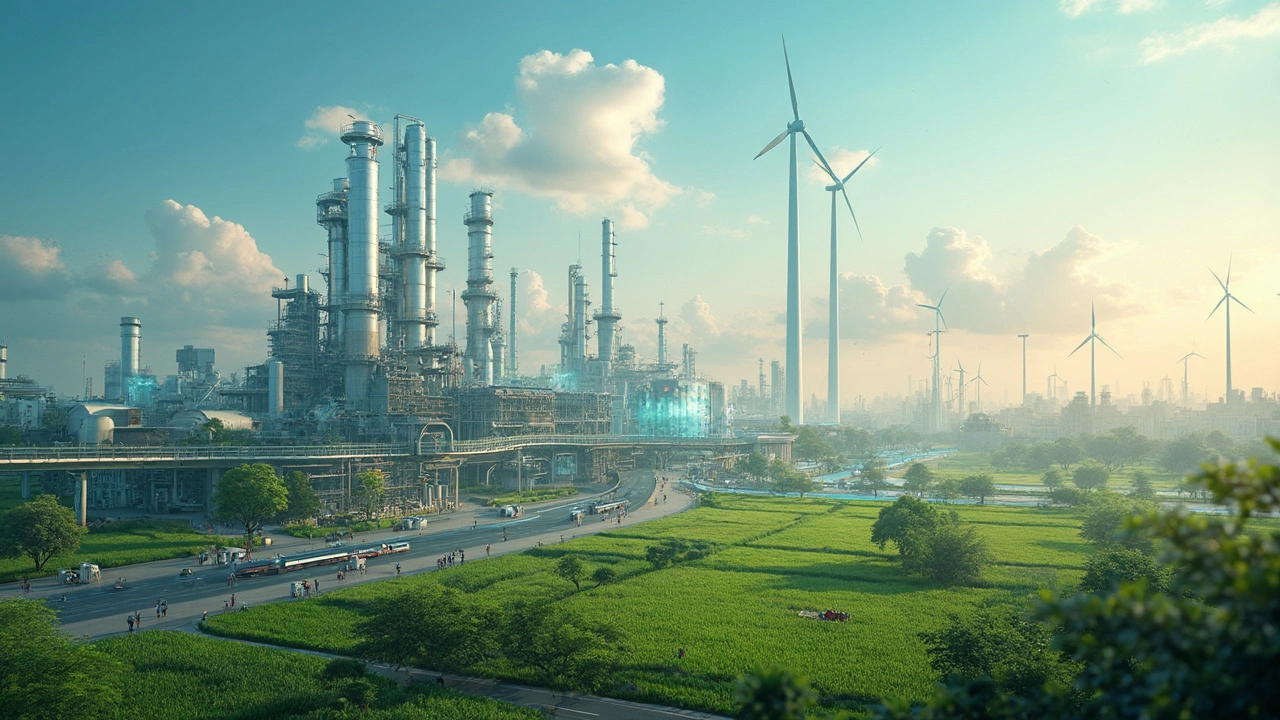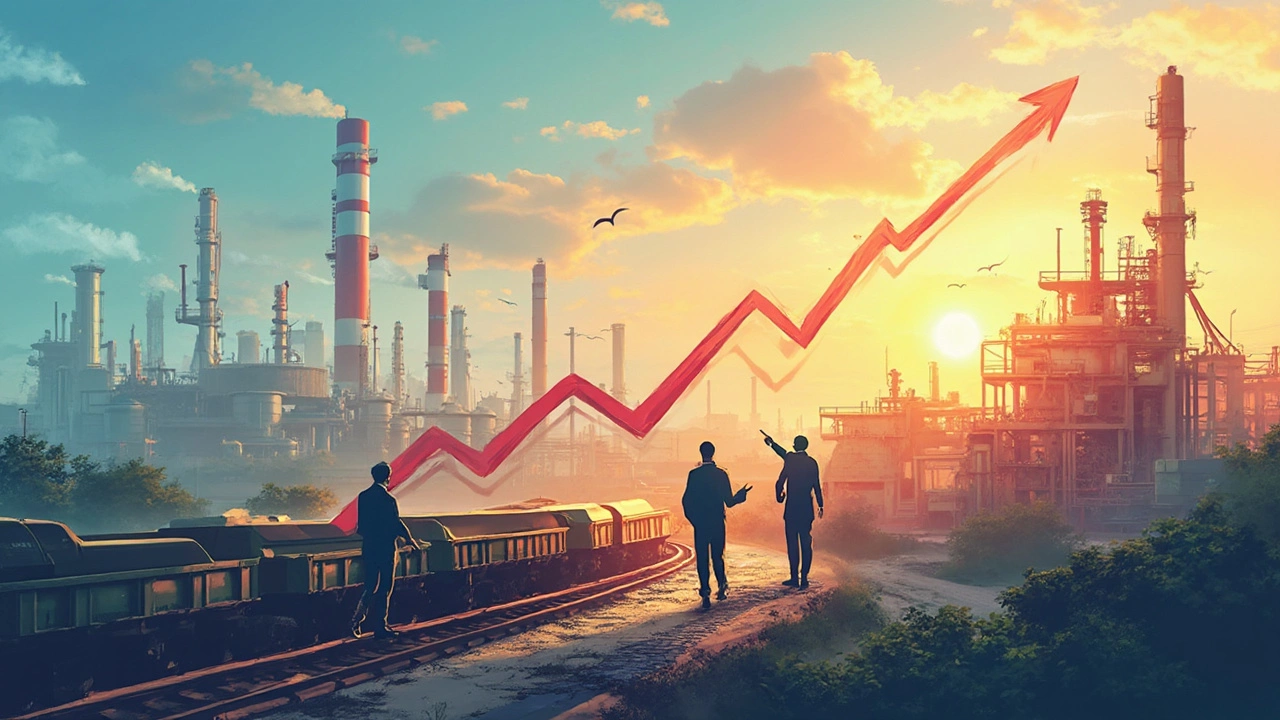Chemical Industry Outlook 2024: India’s Big Shake-Up

The chemical industry in India is on the move, and 2024 isn’t just another year—it’s a turning point. Forget the old days when India mostly followed the global leaders. Now, the industry’s setting its own pace with rapid growth and some bold experiments by major players.
Manufacturers are eyeing more automation, tighter quality control, and faster R&D cycles. It’s happening because customers—both in India and worldwide—demand quicker deliveries and cleaner products. There’s real pressure, but also big incentives; companies that go digital and green are raking in new deals and higher profits.
But it’s not all rosy. Raw material prices keep everyone on edge, and government regulations around safety, emissions, and waste are stricter than ever. That said, the folks who crack the code—maybe by locking in new supply partners closer to home or by investing in recycling—are seeing the rewards. If you run or supply to a chemical company in India, this year is all about hustling smart and not just working hard.
- Growth Trends: Who’s Booming and Why?
- Smart Manufacturing: Technology Taking Over
- Green Shift: Impact of Sustainability Rules
- Challenges: The Real Hurdles for 2024
- What’s Next: Where the Smart Money Goes
Growth Trends: Who’s Booming and Why?
The chemical industry in India is on a hot streak, with a lot of the action centered around specialty chemicals. Companies like Aarti Industries, SRF, and Atul Ltd had double-digit revenue growth in 2023, mostly because global firms are shifting away from China. This "China plus one" trend means more orders for Indian manufacturers—and not just from the usual buyers in Europe and the US, but also from countries in Southeast Asia and the Middle East.
Agrochemicals, pharma intermediates, and coatings stand out. In fact, the specialty chemicals segment saw exports jump by 17% in the last financial year, and local consumption isn’t lagging either. A lot of this growth is tied to surging demand from India’s auto and construction sectors, and a big push in the government-backed PLI (Production Linked Incentive) schemes.
Check out the numbers that really show the story:
| Segment | Growth Rate (2023-2024) | Key Players |
|---|---|---|
| Specialty Chemicals | 15% | Aarti, Atul, SRF |
| Agrochemicals | 13% | UPL, PI Industries, Rallis |
| Pharma Intermediates | 12% | Laurus Labs, Divi’s |
| Basic Chemicals | 7% | Gujarat Alkalies, Tata Chemicals |
The market is also changing thanks to global brands wanting safer, greener products. It’s not just talk—big buyers now require better traceability and lower emissions, so Indian firms investing in clean tech or recycling are getting first dibs on contracts. Fast movers are scaling up for export markets while also tapping into massive local demand, especially with rural and urban construction projects firing up. So, it’s not just the biggest companies growing; even mid-tier manufacturers who pivot fast and manage costs are in for a good year.
Smart Manufacturing: Technology Taking Over
India’s chemical industry is not just talking about tech—it’s living it. Smart manufacturing is the new normal. Automation, data analytics, and robotics aren’t just for big global names anymore. Now, Indian chemical plants are investing hard in them to get ahead.
The payoff? Fewer mistakes, faster turnaround, and a safer workspace. A 2023 report by the Indian Chemical Council found nearly 48% of mid-to-large Indian chemical manufacturers now use advanced automation in some way. They catch quality issues quicker. They save power and raw materials by keeping processes razor-sharp.
If you looked at a modern plant in Gujarat or Maharashtra, you’d see more sensors on machines feeding real-time stats to control rooms. Operators spot trouble early—before it costs a fortune. Data from the last year showed plants using digital controls cut downtime by as much as 20% compared to traditional setups.
| Tech Solution | Average Cost Savings (%) | Adoption Rate in 2024 (%) |
|---|---|---|
| Automation & Robotics | 18 | 55 |
| Advanced Analytics | 12 | 42 |
| Industrial IoT Sensors | 9 | 37 |
Also, a lot of companies are jumping onto cloud-based systems to keep tabs on stock, shipments, and even compliance certificates. This cuts paperwork and delays, freeing up staff to focus on actual production instead of chasing files around the office.
For small and mid-sized players, the trick is picking the right tools. You don’t have to spend a fortune to see gains. Start with automating the riskiest or messiest steps first—say, chemical mixing or hazardous waste handling.
The bottom line? Staying in the game—especially as a chemical industry supplier in India—means betting on smart manufacturing, not dodging it.

Green Shift: Impact of Sustainability Rules
Sustainability rules are hitting India’s chemical industry hard in 2024. If you’re making or selling chemicals here, ignoring the new green playbook just isn't an option. The government’s pushing strict waste controls, limiting hazardous emissions, and asking firms to cut water and energy use. For example, the revised National Chemical Policy means new reporting standards, and getting permits is now tied to compliance with sustainability targets.
The industry can’t just see this as extra paperwork. Customers—especially big pharma and automotive companies—ask for green credentials before placing orders. If you don’t have them, you’re off the list. That’s why big players like Tata Chemicals and Aarti Industries are switching to renewable energy for part of their operations and investing in closed-loop water systems.
Here’s where the investment goes:
- Cleaner production methods: Replacing old reactors with tech that cuts waste or reuses solvents.
- Energy: Shifting plant power to solar, wind, or biofuels.
- Recycling: Upgrading plants to use recycled raw materials or capture emissions for later reuse.
- Certifications: Earning ISO 14001 or Responsible Care badges, which can be actual deal-breakers for exports.
What’s really changing the game? It’s not only government audits—it’s investor pressure. Big funds look hard at ESG (Environmental, Social, Governance) scores before handing over money. One industry analyst, Praveen Bhatia at CRISIL, summed it up:
“Sustainability isn’t just moral posturing; it’s directly tied to staying in business and landing the largest contracts.”
This green shift means manufacturers who move fast can lock in better clients and demand higher prices. Those dragging their feet face fines, bans, or worse—getting replaced in global supply chains. So, action today isn’t just smart, it’s survival.
Challenges: The Real Hurdles for 2024
This year, every chemical industry player in India is jumping over a new set of hurdles. Rising input costs, tough new regulations, and global supply chain disruptions are all hitting at once. Even the biggest names are being forced to rethink old ways of working.
Start with raw materials—crucial stuff like caustic soda, methanol, and specialty chemicals saw their prices swing by up to 35% in the past twelve months. Local manufacturers who depended on Chinese imports were caught off guard by sudden export restrictions and freight rate spikes. Companies playing it smart are turning to domestic suppliers, but they’re not fully insulated yet.
Then there’s the crackdown from the Indian government. Since January, new waste management and emission standards have come into play. Factories are spending more on compliance upgrades to avoid massive penalties. There’s also a nationwide push for cleaner water discharge, so setting up advanced treatment plants isn’t optional anymore—it’s survival.
Workforce skill gaps aren’t helping either. As plants automate and digital tools become standard, older workers sometimes struggle to keep pace. Training budgets are up, but it takes time before fresh hires and upskilled staff can keep the lines running smoothly.
And don’t forget energy. Electricity and fuel make up over 25% of operational costs for some segments. Last summer’s power outages shaved points off production, and companies are scrambling for solar or backup power deals to fill the gap.
| Key Challenge | Recent Impact (2024) |
|---|---|
| Raw Material Volatility | Methanol prices up 35%, caustic soda up 18% |
| Regulations | Over 400 plants required upgrades since Jan |
| Labor/Skills Shortage | Average production downtime up by 7% |
| Energy Costs | Electricity rates up 15% YoY, affecting margins |
| Logistics/Supply Chain | Shipping delays average 11 days vs 5 days pre-2024 |
If you’re in the thick of it, here’s what’s working for some companies:
- Lock in long-term raw material contracts with local suppliers—hedges against global shocks.
- Invest early in digital skill training for teams, not just machines.
- Schedule demand-flexible production during non-peak energy hours to cut power costs.
2024 may feel rough, but every challenge is also shaking out new winners—those who act fast, adapt, and keep a close eye on where costs (and opportunities) are moving.

What’s Next: Where the Smart Money Goes
If you’re trying to figure out where to put your money, the Indian chemical industry has hotspots that are buzzing in 2024. It’s less about luck and more about spotting the right current before everyone else. Here’s the deal: businesses that doubled down on specialty chemicals last year are already seeing bigger returns. Specialty chemicals, used in everything from electronics to paints, are growing at nearly 12% a year, outpacing basic bulk chemicals by a huge margin.
Investors are also rushing into companies solving supply chain pain. Firms that have built reliable local supplier networks are beating out rivals who still depend on global shipping—which has gotten pricier and riskier since 2020. There’s massive interest in digitization too; companies rolling out track-and-trace tech, AI-driven forecasting, or robotics get more investor calls than those dragging their feet.
The real winners? They’re in segments tied to fast-growing industries: EV batteries, agrochemicals, and personal care ingredients. EV battery chemical makers, especially those scaling up lithium and electrolyte production, locked in deals with major auto players early this year. Agrochemical demand is surging after the government’s new support policies for pesticide exports. And personal care ingredients are hot, thanks to Indian consumers flocking to local beauty brands.
To give you a quick sense of where the action is, check out this data:
| Segment | 2024 Growth Rate (%) | Key Drivers |
|---|---|---|
| Specialty Chemicals | 12.1 | Electronics, paints, water treatment |
| Agrochemicals | 10.8 | Export support, farm demand |
| EV Battery Chemicals | 17.5 | Auto industry, energy storage |
| Personal Care Ingredients | 9.2 | Consumer brands, local trends |
Now for the practical stuff. If you’re a manufacturer or supplier, consider these moves:
- Shift R&D budget towards sectors with double-digit growth, like battery materials.
- Find joint-venture partners for tech transfer, especially with Japanese, Korean, or European firms—these markets are opening doors to Indian specialty chemical producers.
- Lock in long-term contracts with large buyers in pharma, auto, and FMCG. They’re prioritizing Indian suppliers this year due to global tensions preventing easy imports.
- Invest in recycling or waste-to-value tech. Green credentials aren’t just nice—they’re required if you want export deals, especially to Europe.
The short version? The chemical industry in India is primed for serious growth, but only for those who make sharp, forward-looking bets. Standing still means losing ground—fast.